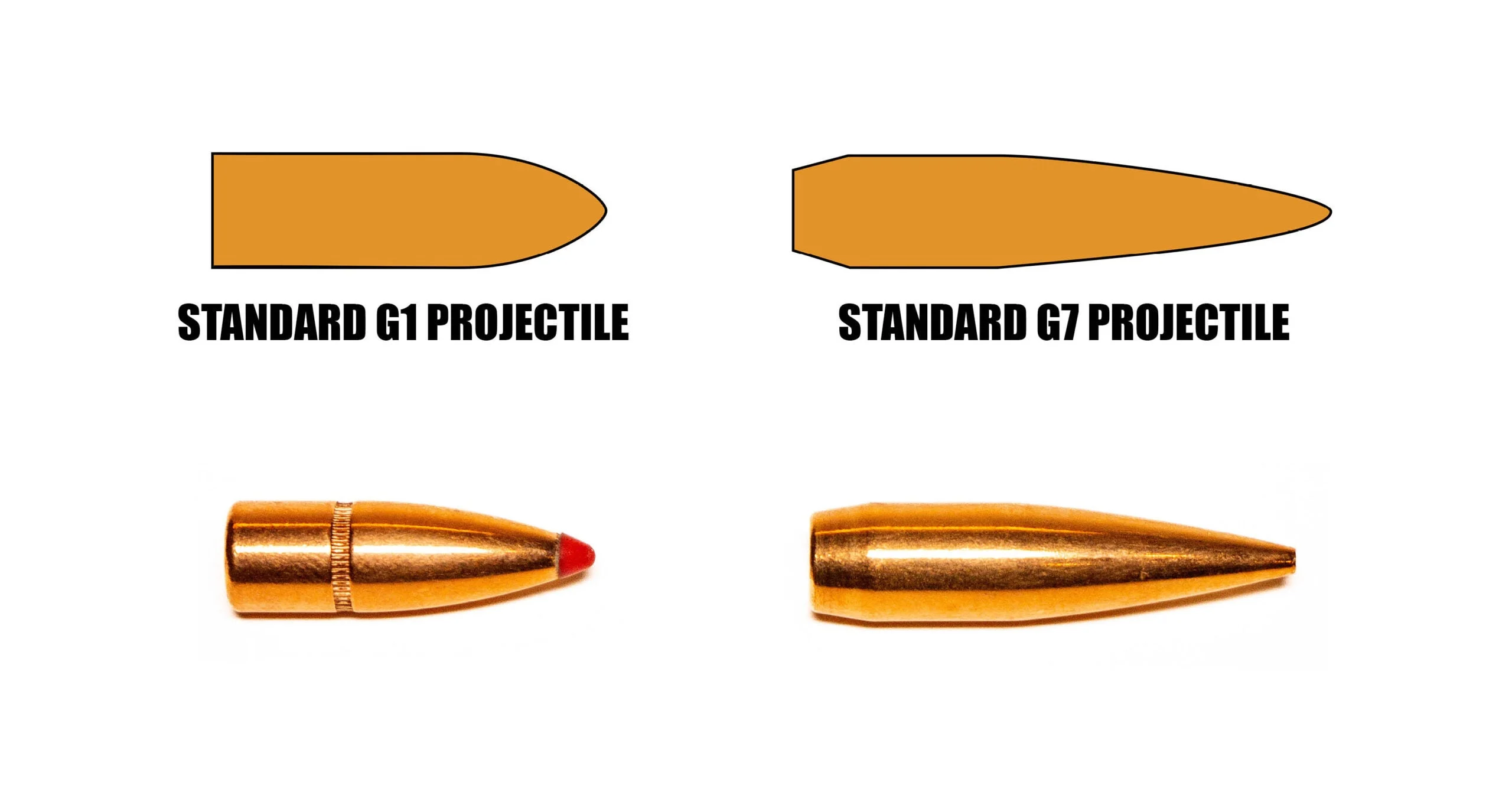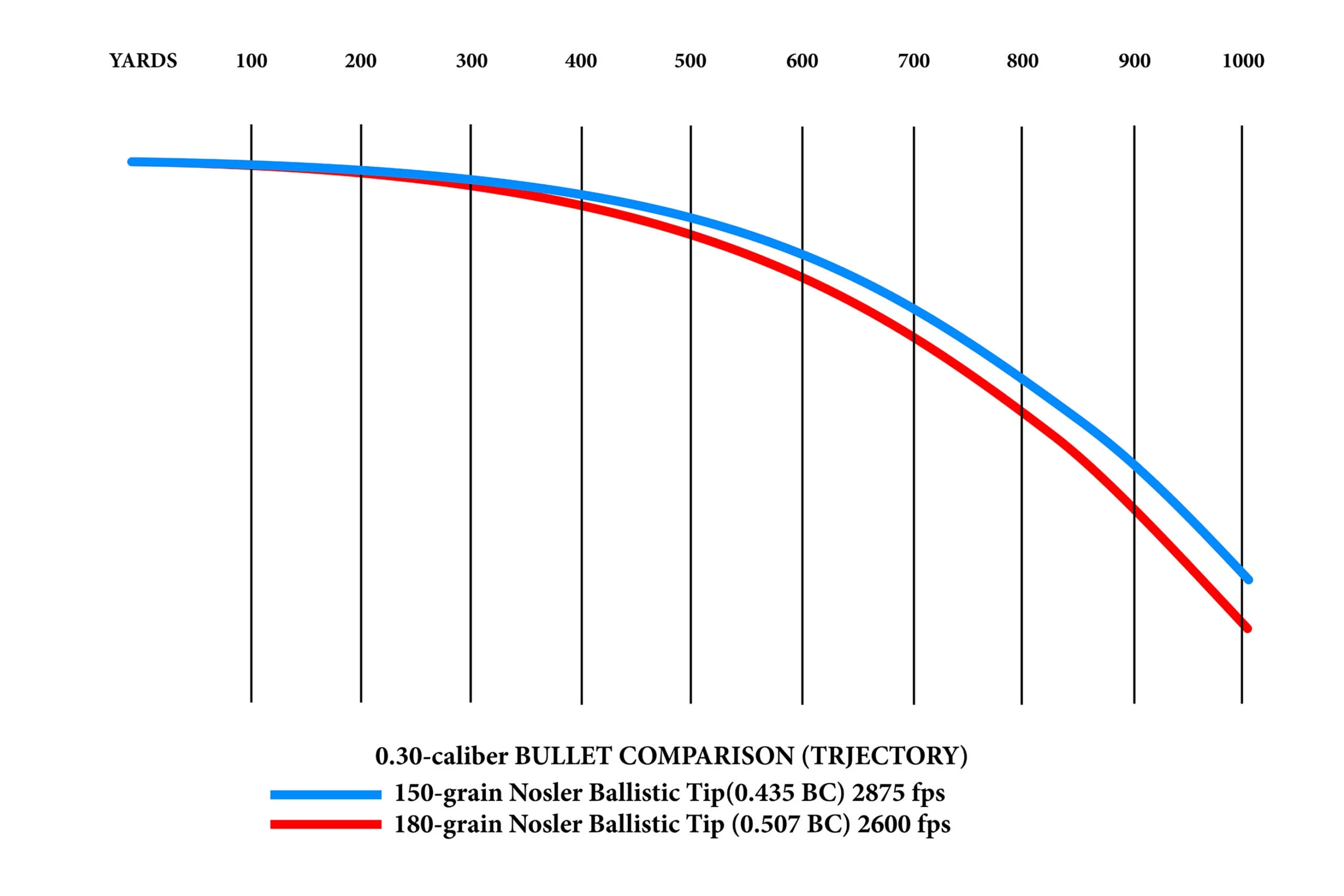_We may earn revenue from the products available on this page and participate in affiliate programs. Learn more ›
_
The term “ballistic coefficient”(BC) is on everybody’s lips these days. It’s the driving force behind the latest wave of cartridge innovation
, to the point where ammo manufacturers can hardly offer a new load without touting the bullet’s high-BC. That’s fine, but given that few things are what they’re cracked up to be (especially when someone is trying to sell you something), you might wonder how important BC really is to the average hunter and shooter?
For years, hunters pretty much ignored ballistic coefficient. The term only became widely used during the last two decades, as shooters and hunters began to stretch the distance
. Technically, ballistic coefficient is a numerical expression of a bullet’s aerodynamic properties, but most shooters look at it as just a number you enter into a ballistic calculator to see how much your bullet will drop or drift in the wind. You don’t need a physics degree to know that a football has better flight characteristics than a basketball, but with bullets the differences are much more subtle. Ballistic coefficient is just a way to very precisely define those aerodynamic differences. The question is: Are those differences big enough to affect your success in the field or on the range?

Learn how to get the all-new Field & Stream journal!
How Ballistic Coefficient is Computed
One problem with BC is that shooters and hunters cannot readily compute it like they can bullet weight or bullet length. Another problem is that a bullet’s BC changes with velocity. This means we must take the word of bullet manufacturers when it comes to a bullet’s BC. They estimate it based on how a bullet compares to a standard projectile with what is known as a G1 or G7 shape. (This is why we have BCs that are listed as G1 or G7.) Alternatively, the bullet’s BC is calculated by actual shooting. Most bullet manufacturers do a great job of establishing BC, but sometimes they fudge the numbers slightly for marketing purposes.

BC is calculated by comparing a bullet’s shape to either a G1 or G7 standard projectile, or by shooting the bullet at various velocities and deciphering its performance.
This is because BC gets so much attention these days, and because some shooters and hunters believe they must use a bullet with the highest BC possible to hit or even kill anything. This is preposterous. A high-BC bullet can help with trajectory and wind drift, but except in extreme comparisons and/or in extreme long-range situations, the advantage high-BC bullets offer is negligible. Let’s look at how high- and low-BC bullets compare and how high-velocity bullets compare to slower more aerodynamic bullets to get a better understanding of how BC influences bullet flight.
The Truth About High BC vs Low BC

Ballistic coefficient is all about bullet shape and how that shape—combined with velocity—slices through the air. The lineup of bullets above go from low-BC on the left to higher-BC on the right. Richard Mann
The biggest advantage with a higher-BC bullet comes when you’re comparing drastically different bullets of the same weight and caliber. A good comparison is Hornady’s 150-grain Interlock bullet with a round nose, and their 150-grain Interlock bullet of the BTSP design. The round-nose bullet has a BC of 0.186 and the BTSP bullet has a BC of 0.349. If both are fired with a muzzle velocity of 2700 fps, the higher-BC bullet will drop about 6 inches less at 300 yards. That’s substantial—and a real advantage for many hunters in the field.
However, BC discrepancies this large are rare. Most often, a hunter might be deliberating between something like a 150-grain Nosler Ballistic Tip
with a 0.435 BC and a 150-grain Hornady SST
bullet with a 0.415 BC. Both will deliver very similar terminal performance due to their construction, and with identical launch velocities of 2700 fps, the higher-BC Nosler Ballistic Tip bullet only drops about a quarter inch less at 300 yards. This is not enough difference to matter, unless you’re shooting M&Ms or flies at that distance.
High Ballistic Coefficient vs High Velocity
Rifles shoot lighter bullets faster, and for a long time, velocity was how we flattened trajectories. For example, if you compare a 308 Winchester firing a 150-grain Nosler Ballistic Tip with one firing a 180-grain Ballistic Tip, you can see the advantage that high velocity provides. Even though the 180-grain bullet is more aerodynamic, from a trajectory standpoint, it cannot overcome the higher initial velocity of the 150-grain bullet. It takes a tremendous BC advantage to overcome a velocity advantage of 275 fps.
For example, if you wanted a 180-grain bullet from a 308 Winchester to deliver the same 52.54 inches of drop as the 150-grain Ballistic Tip at 500 yards, the velocity of the 180-grain bullet would either have to be increased by 205 fps or its BC would have to be doubled. The problem: a 180-grain 0.30-caliber bullet with a BC that high does not exist. This is one of the main reasons BC was not talked about so much until shooting at extreme range become more commonplace.


Ballistic Coefficient and Wind Drift
To shoot at long range effectively you need to be able to predict the trajectory of your bullet, and that’s been made very easy with modern ballistic calculators. You also need to be able to predict wind drift, which is easier now too. But wind drift predictions can never be exact because you cannot accurately estimate wind speed from the muzzle all the way to the target. This has made bullets with a high BC more popular with long-range shooters, because they drift less in the wind, making minor wind estimation errors less critical.


If we return to our 150 and 180 Ballistic Tip comparison, we see that the 180-grain Ballistic Tip drops a predictable 45 inches more than the 150-grain bullet at 1000 yards. The wind drift is very similar out to 500 yards, but at extreme range, the higher-BC 180-grain bullet drifts less. If we look at a .30-claiber bullet with an even higher BC, like the 178-grain Hornady ELD-X, you can see how it is even more advantageous as it relates to wind drift. And, because we can very accurately predict trajectory, the true advantage of higher-BC bullets is how well they deal with wind.
**Related: Best Long-Range Hunting Cartridges
**
BC and Terminal Performance
The other advantage of a high-BC bullet is its ability to retain velocity. This is important to hunters for reasons unrelated to trajectory and wind drift. The more velocity a bullet retains, the harder it hits the target. And bullets need to impact at a certain velocity—with a certain amount of energy—to initiate bullet upset or expansion. As you can see in the chart below, once you get to 500 yards, the 180-grain Nosler Ballistic Tip hits just as hard as the faster-moving 150-grain bullet, and it still retains enough velocity to initiate bullet upset. The same is truer for the even higher BC 178-grain ELD-X bullet.

The Bottom Line with Ballistic Coefficient
In the end, there’s no question that high-BC bullets have ballistic advantages of low-BC bullets. But that doesn’t mean you should swap your favorite hunting load for one with a higher-BC bullet—because except at very long range or extreme cases (like when comparing a round nose to a spitzer bullet), BC simply doesn’t make much of a real-world difference. Even though high-BC bullet compatibility is one thing that make cartridges like the 6.5 Creedmoor and 6.5 PRC so popular, for hunters who shoot inside or not far beyond 300 yards, you don’t need to waste your time worrying about it. The same is also true for targets shooters who play at similar distances.

For most hunters, in most situations, terminal performance and precision matter a lot more than ballistic coefficient. Sabastian “Bat” Mann
Where high-BC bullets have an advantage is at long, and especially extremely long distances. In these situations, where wind can be very hard to predict and sometimes range estimations can be slightly off, the more aerodynamic high-BC bullets can make getting hits easier. And for hunters who want to stretch the range to near ridiculous lengths, higher-BC bullets can hit harder because of better velocity and energy retention.
Maybe the best representation of the advantage of a high-BC bullet is to look at it this way. If you wanted to throw a ball through a hula-hoop at about 15 yards, it’s about as easy to do it with a basketball or a football. But take that hoop out to 80 yards, and the higher BC—better aerodynamics—of the football will make the throw much easier. But that doesn’t mean you can throw a football 80 yards—or should even try.


